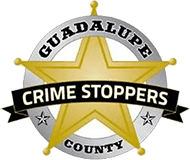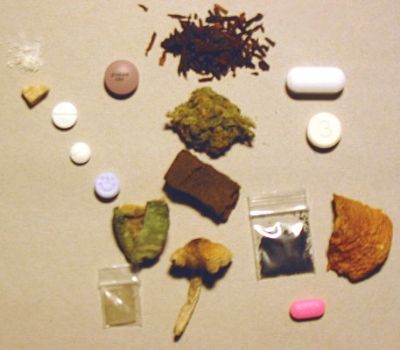NEED ANSWERS? Below you will find information on Signs of Drug Use and Gang Activity
Signs of Drug Use
Methamphetamines: “Wired,” sleeplessness for days and weeks at a time, total loss of appetite, extreme weight loss, dilated pupils, excited, talkative, deluded sense of power, paranoia, depression, loss of control, nervousness, unusual sweating, shaking, anxiety, hallucinations, aggression, violence, dizziness, mood changes, blurred vision, mental confusion, agitation.
Cocaine: Impaired thinking, confused, anxious, depressed, short tempered, panic attacks, suspiciousness, dilated pupils, sleeplessness, loss of appetite, decreased sexual drive, restlessness, irritability, very talkative, scratching, hallucinations, paranoia.
LSD (Acid): Dilated pupils, skin discoloration, loss of coordination, false sense of power, euphoria, distortion of time and space, hallucinations, confusion, paranoia, nausea, vomiting, loss of control, anxiety, panic, helplessness, and self destructive behavior.
PCP: Sometimes violent or bizarre behavior, suicide has often occurred, paranoia, fearfulness, anxiety, aggressive or withdrawn, skin flushing, sweating, dizziness, total numbness, and impaired perceptions.
Inhalants: Short-lasting euphoria, giggling, silliness, dizziness. Then come the headaches and full-blown “faintings” or going unconscious. Longterm Use: Short-term memory loss, emotional instability, impairment of reasoning, slurred speech, clumsy staggering gait, eye flutter, tremors, hearing loss, loss of sense of smell, and escalating stages of brain atrophy. Sometimes these serious longterm effects are reversible with body detoxification and nutritional therapy; sometimes the brain damage is irreversible or only partially reversible.
Heroin: Chemically enforced euphoria. “Nodding,” which is a dreamlike state, near sleep, drifting off for minutes or hours. For long time abusers heroin may act like a stimulant and they can do a normal daily routine; however, for others, it leaves them completely powerless to do anything.
Marijuana: Compulsive eating, bloodshot red eyes that are squinty (they may have trouble keeping them open), dry mouth, excessive and uncontrollable laughter, forgetfulness, short term memory loss, extreme lethargy, delayed motor skills, occasional paranoia, hallucinations, laziness, lack of motivation, stupidity, sickly sweet smell on body, hair, and clothes, and strong mood changes and behaviors when the person is “high”.
Depressants (Tranquilizers and Barbituates): Decreased inhibition, slowed motor coordination, lethargy, relaxed muscles, staggering gait, poor judgement, slow, uncertain reflexes, disorientation, and slurred speech.
What is a Gang?
A gang is defined as an organization, association or group of three or more persons, whether formal or informal, which has a common name and/or common identifying signs or symbols, whose members individually and/or collectively engage in criminal activity.
Why Do Kids Join Gangs?
- Identity through recognition
- Perception of belonging
- Peer pressure
- Intimidation
- Protection (real or perceived)
- Lack of family life
- Family ties to gangs (it is expected or acceptable to join a gang)
- Brotherhood/interpersonal bonding
- Low self-esteem
How Do Gangs Recruit Members?
Gangs influence youths into joining by using the following methods:
- Peer pressure, offers protection
- Monetary enticements
- Challenging kids to take risks
- Invitations to parties where gang-related activities are occurring
- Family members already belong
- Affection and attention shown to the youths by gang members that may not be given at home
What Are The Consequences of Gang Involvement?
Short Term Consequences
- In trouble with law enforcement
- Drop in performance at school
- Withdrawal from family
- Drug and alcohol involvement
- “Dirty work” for the gang, earning their “bones” or “stripes”
Long Term Consequences
- Loss of opportunities for education/employment due to criminal record
- Time spent in jail or prison
- Possibility of losing family or friends
- Risk of personal injury or death
- Risk of family members’ lives
- Increased risk of violence in criminal activity
What Are Signs of a Gang in My Neighborhood?
- Graffiti
- Youths hanging out
- Increase in crime- Gang-related acts such as burglary, vandalism and assaults.
How Can Neighbors Help?
You and your neighbors can work to eliminate gangs and drugs from your community and neighborhoods. They key is organization:
- Get to know the neighbors on your block.
- Contact your local law enforcement agency for advice and assistance for organization tips.
- Contact Crime Stoppers
What Are Signs of Gang Involvement?
- Changes in attitude or behavior
- Openly admits gang affiliation
- Showing colors (bandanas, t-shirts, jackets, shoes, ball caps)
- Association with known gang members
- Unwillingness to discuss their activities
- Loss of family interest
- Reluctance to be seen with other family members
- Unexplained injuries (cuts and bruises)
- Trouble with law enforcement or at school
- Has unexplained cash or goods (clothing, jewelry, electronics)
- New Friends
- Tattoos or graffiti-style writing on clothing or books
- Disregard for persons or property
- Exhibiting signs of alcohol and drug use
How Can Parents Intervene?
- Spend quality time with your child.
- Encourage your child to become involved in athletics or other group activities that have adult supervision.
- Set reasonable rules and enforce them consistently.
- Demonstrate how to set goals.
- Monitor and support child’s progress.
- Teach social skills that enhance self-esteem and how to cope with peer pressure.
- Educate the teen or child about the dangers of gang involvement.
- Provide strong religious background.
- Keep an open line of communication with your child.
- Know your child’s friends and where they hang out.
- Keep track of your child’s work at school.
- Teens and children need to be involved with positive activities without a lot of leisure time.
- Keep them involved in after-school activities, athletics or a job along with family time.

